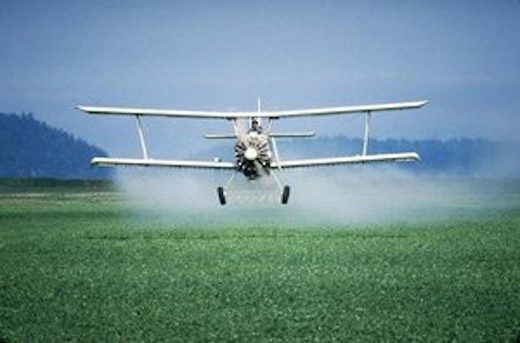The Environmental Protection Agency last week released its first rigorous nationwide analysis of the effects of pesticides on endangered species, finding that 97 percent of the more than 1,800 animals and plants protected under the Endangered Species Act are likely to be harmed by malathion and chlorpyrifos, two commonly used pesticides. Another 78 percent are likely to be hurt by the pesticide diazinon. The results released today are the final biological evaluations the EPA completed as part of its examination of the impacts of these pesticides on endangered species.
"We're now getting a much more complete picture of the risks that pesticides pose to wildlife at the brink of extinction, including birds, frogs, fish and plants," said Nathan Donley, senior scientist at the Center. "The next step will hopefully be some commonsense measures to help protect them along with our water supplies and public health."
The three pesticides are all organophosphates, a dangerous old class of insecticides found in 87 percent of human umbilical-cord samples and widely used on crops such as corn, watermelon and wheat. Chlorpyrifos is currently under consideration to be banned for use on food crops in the United States. The World Health Organization last year announced that malathion and diazinon are probable carcinogens.
Comment: Read more about The myth of safe pesticides & the negative effects on children
Dr. Theo Colborn, one of the world's acknowledged leading experts on endocrine-disrupting chemicals and coauthor of Our Stolen Future, published a peer-reviewed study in the scientific journal Environmental Health Perspectives that examined these issues. The study reviewed of many of the scientific papers and showed the widespread extent to which children and the unborn are exposed to numerous pesticides. Multiple pesticide residues have been found in semen, ovarian follicular fluid, amniotic fluid, maternal blood, placental and umbilical cord blood, breast milk, meconium of newborns, and in the urine of children. She writes, "It is fairly safe to say that every child conceived today in the Northern hemisphere is exposed to pesticides from conception throughout gestation and lactation regardless of where it is born."
The information from these numerous scientific studies shows that current regulatory systems around the world have failed to protect unborn and growing children from exposure to a massive cocktail of toxic pesticides. This has many serious implications especially the increase in a range of serious health issues in children and as adults later in life.
"When it comes to pesticides, it's always best to look before you leap, to understand the risks to people and wildlife before they're put into use," said Donley. "The EPA is providing a reasonable assessment of those risks, many of which can be avoided by reducing our reliance on the most toxic, dangerous old pesticides in areas with sensitive wildlife."
Following these final evaluations from the EPA, the U.S. Fish and Wildlife Service and the National Marine Fisheries Service will issue biological opinions to identify mitigation measures and changes to pesticide use to help ensure that these pesticides will no longer potentially harm any endangered species in the United States when used on agricultural crops. As part of a legal settlement with the Center for Biological Diversity, these biological opinions are on deadline to be completed by December 2017.




Comment: Interesting statement considering the following: Judge says EPA does not have to address call to label hazardous pesticide ingredients. Also, it is important to remember that the EPA favors industry when assessing chemical dangers!